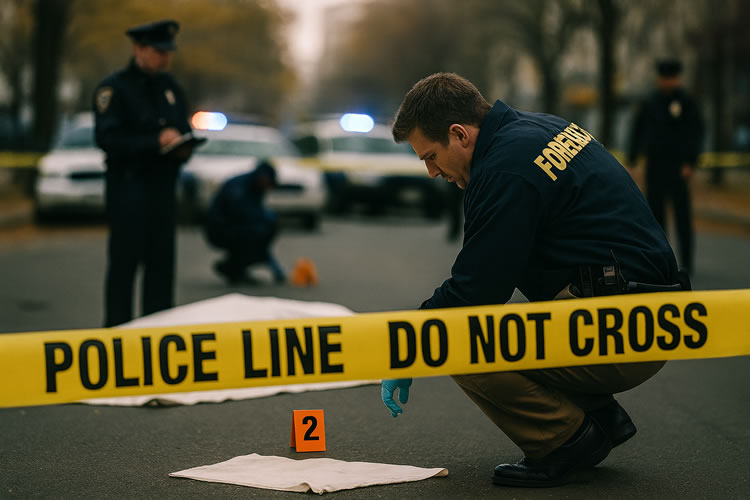The murder of 23-year-old Ukrainian refugee Iryna Zarutska on a light rail train in Charlotte, North Carolina, allegedly at the hands of a man described as schizophrenic, has reignited a hard conversation in America. Decades of research confirm that most people with schizophrenia never commit violence. Yet newer evidence also shows that, as a group, they are statistically more likely to be violent than the general population—though the difference is driven by a relatively small subgroup. And within that subgroup, once violence occurs, the chances of it happening again rise sharply.
How Common is Schizophrenia in the U.S.?
Schizophrenia is a relatively rare condition, affecting about 0.25 to 0.64 percent of U.S. adults in any given year, according to the National Institute of Mental Health. When expanded to the broader “schizophrenia spectrum,” including related disorders, the lifetime prevalence approaches 1 percent.
That translates to roughly 1.3 to 2.5 million adults in the United States living with schizophrenia-spectrum illness. The overwhelming majority of them will never commit an act of violence.
Violence and Mental Illness: The Numbers
While most are nonviolent, research consistently shows a heightened risk among people with schizophrenia compared to the general population. Large-scale reviews estimate that about 7 to 10 percent of men with schizophrenia will commit a violent offense at some point in their lives. For women, the rate is lower, closer to 2 to 4 percent.
In absolute numbers, that works out to tens of thousands of Americans with schizophrenia who may become violent at least once. For homicide specifically, meta-analyses suggest about 0.3 percent of people with psychosis have committed such a crime—a tiny proportion of the ill population, but still several thousand individuals nationwide.
Substance Use: The Biggest Risk Multiplier
One of the clearest findings in psychiatric epidemiology is that substance abuse and schizophrenia together create far more risk than either condition alone. Alcohol or drug misuse roughly doubles or triples the likelihood of violence in people with severe mental illness. For those with both schizophrenia and active substance use, the risk can be up to nine times higher than the general population.
The Recidivism Problem
If the statistics end there, the picture might sound reassuring: most people with schizophrenia are peaceful, and the violent subgroup is small. But the story changes when looking at recidivism.
Research shows that, as in the general population, past violence is the strongest predictor of future violence in people with schizophrenia. Offenders with schizophrenia often reoffend if untreated, though studies differ on whether their recidivism rates are higher than those of other violent offenders. Long-term follow-up studies have found that a significant share of violent offenders with schizophrenia go on to commit further acts of violence, especially when they are not receiving consistent treatment. In prison and forensic psychiatric samples, repeat offending is common, with some studies finding that the majority relapse into violent behavior over time.
Among people with schizophrenia, the combination of untreated illness, substance abuse, and unstable living conditions creates the highest risk of serious violence. Exact long-term recidivism rates for this subgroup are difficult to measure, but every major study identifies these factors as the strongest predictors of repeat violence.
The best predictor of future violence is past violence. That principle applies to everyone, but it is particularly stark in schizophrenia, where untreated psychosis, substance use, and medication noncompliance often recur in cycles.
🍁 Make a One-Time Contribution — Stand Up for Accountability in Vermont 🍁
Warning Signs Clinicians Watch
Mental health professionals have identified consistent warning signs that raise the probability of serious violence:
- Active substance use (alcohol, stimulants, or other drugs).
- Persecutory delusions—beliefs that others are plotting to harm them.
- Command hallucinations ordering the person to attack or defend themselves.
- Non-adherence to medication, leading to relapse.
- Past violent acts, especially with weapons.
- Impulsivity and agitation without stabilizing supports.
When these factors stack together, the risk is no longer theoretical.
Why This Matters Now
The North Carolina killing is not the first high-profile case of a young woman murdered by someone later described as mentally ill. Each time, the public is told—accurately—that most people with schizophrenia are not violent. But what gets left out is the statistical reality: the subgroup who have already committed violence are at high risk of doing so again.
That gap between the general reassurance and the specific risk matters for public policy. It shapes how states handle involuntary treatment, parole and probation for offenders with psychosis, and the availability of long-term secure psychiatric facilities.
Liberty and Safety: A Constitutional Balance
The U.S. Constitution places liberty as the default, but allows safety as the override switch. Just as states can quarantine individuals with communicable diseases who refuse treatment, they can confine or closely monitor those with severe mental illness who present a proven danger to others.
Court decisions such as O’Connor v. Donaldson (1975) stress that mental illness alone is not enough to justify confinement; there must also be evidence of dangerousness. At the same time, public health law dating back to Jacobson v. Massachusetts (1905) upholds the government’s authority to protect the public from credible threats, whether microbial or behavioral.
The Takeaway
The reality is twofold. First, most Americans with schizophrenia are not violent and never will be. Second, among the minority who do become violent, recidivism is common and often predictable based on known risk factors.
Acknowledging both truths at once allows for a more honest conversation. It means rejecting stigma against the peaceful majority, while also confronting the fact that a smaller, high-risk subgroup poses a genuine threat to public safety if left untreated or unsupervised.
As the case in North Carolina illustrates, avoiding that conversation has consequences measured in lives lost.
Dave Soulia | FYIVT
You can find FYIVT on YouTube | X(Twitter) | Facebook | Instagram
#fyivt #mentalhealth #publicsafety #violence
Support Us for as Little as $5 – Get In The Fight!!
Make a Big Impact with $25/month—Become a Premium Supporter!
Join the Top Tier of Supporters with $50/month—Become a SUPER Supporter!









Leave a Reply